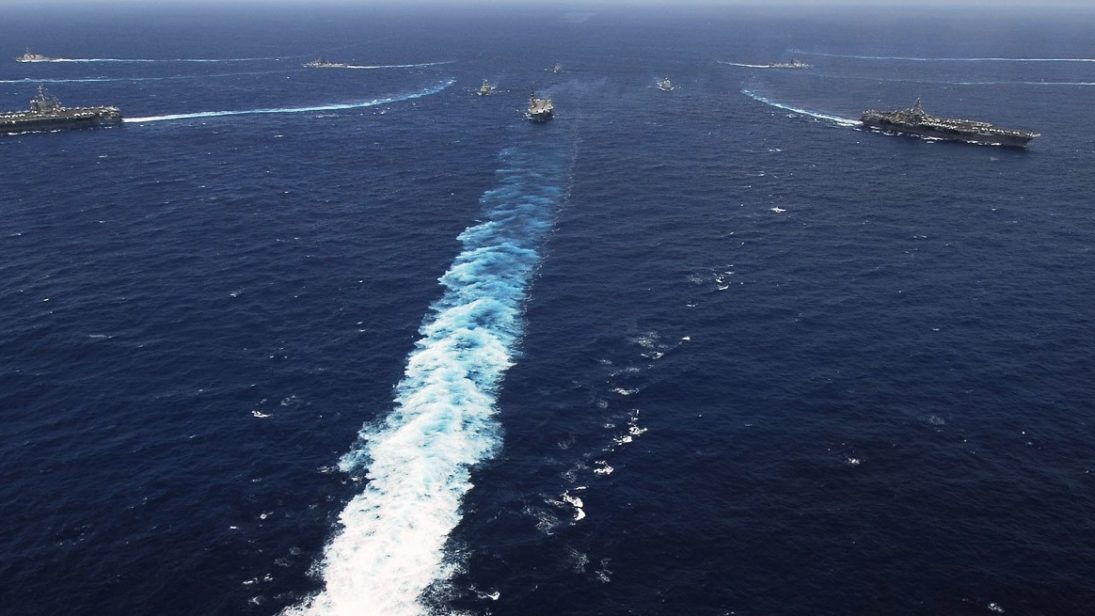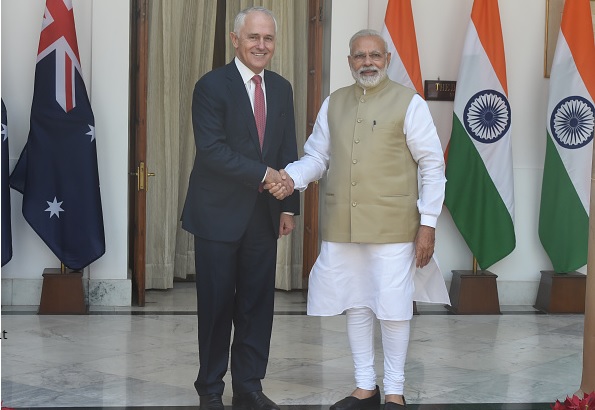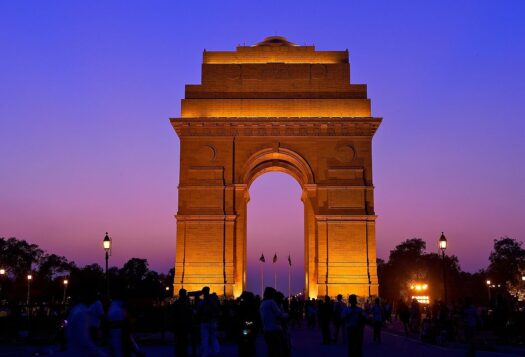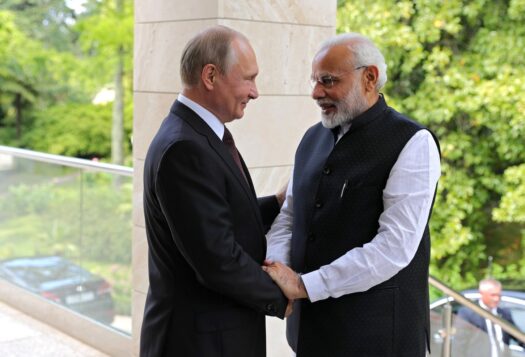
Australia, Japan, and the United States recently unveiled plans for a trilateral infrastructure initiative in the Indo-Pacific, touted as part of the economic pillar supporting the Trump administration’s Indo-Pacific strategy. The idea for this project was first floated around Australian Prime Minister Malcolm Turnbull’s visit to Washington earlier this year, and it was envisioned as a four-way initiative under the umbrella of the Quadrilateral Security Initiative (referred to as the Quad) that also includes India. Although Australia, Japan, and the United States are careful to avoid any comparisons with China’s Belt and Road Initiative (BRI), it can be argued that countering Chinese ambitions vis-à-vis BRI forms the most obvious underlying motivation for this initiative. However, India, a key player in the region and part of the newly-resuscitated Quad, has opted to stay out, with media reports citing its “emphasis on multipolarity in the Indo-Pacific region and non-bloc security architecture.”
India is already involved in bilateral and trilateral infrastructure ventures with Japan and the United States, such as the Asia-Africa Growth Corridor and the Trilateral Working Group on Infrastructure. Why is India now reticent to extend the same cooperation to a four-way arrangement, through the mechanism of the Quad? Why can’t three become four?
India’s Reservations
It seems that India is struggling to disassociate the concept of the Quad from its anti-China connotations and is unable to view it solely in terms of a cooperative arrangement.
Comments made by Admiral Sunil Lanba, Chief of the Naval Staff of the Indian Navy, at an event in May could provide some indication as to why. He remarked: “India is the only country in the Quad with a land border with China. In case of conflict … nobody will come and hold your hand,” adding that India didn’t see the need to give a “military dimension” to the Quad. This was perhaps a reference to the lack of outward support provided by the United States and Australia to New Delhi during its confrontation with China in Doklam last year. Even though American and Australian responses to the Doklam standoff may not be accurate indicators of these countries’ support for India in an actual conflict, perceptions do play a role in the formulation of policy.
It seems that India is struggling to disassociate the concept of the Quad from its anti-China connotations and is unable to view it solely in terms of a cooperative arrangement, perhaps given the circumstances of the Quad’s birth and demise a decade ago. A cliché common in strategic circles is that India’s mistrust of the Quad derives from the 2007 experience of Australia abandoning the group due to its close economic relations with China. Internal opposition to the concept within Australia has probably not improved New Delhi’s perceptions. A few prominent voices within Australia have expressed reservations about the Quad’s present form and trajectory due to its anti-China associations, and they also cite the diverging perspectives among the Quad members on the Indo-Pacific. Similar sentiments have recently been echoed in India as well, claiming that there are unbridgeable differences in the four nations’ perceptions of the Indo-Pacific.
Moreover, maintaining distance from this venture may also be driven by Indian concerns about upsetting China, given that India’s current China policy seems to be in a tactical “reset” mode. It’s safe to assume that the Modi government lacks the political will to commit itself to an expensive pursuit with no obvious electoral benefits in the lead-up to an election year.
Trump’s attitude may have reinforced India’s tendency to hedge its bets and distance itself from any bloc arrangement that could attract China’s ire, especially in the run-up to the Indian general elections in 2019.
Finally, it is important to keep in mind the larger strategic context in which nations operate. As I have argued previously, U.S. President Donald Trump’s transactional attitude to foreign policy has left little maneuvering room for rising and middle powers. Trump’s attitude may have reinforced India’s tendency to hedge its bets and distance itself from any bloc arrangement that could attract China’s ire, especially in the run-up to the Indian general elections in 2019.
India’s Loss, China’s Gain?
India should have shed its inhibitions about the Quad and signed up to the infrastructure proposal, to walk the talk on its reservations about the BRI. New Delhi’s was the lone voice opposing the BRI last year, citing China’s lack of respect for territorial sovereignty and its potential for creating unsustainable debt traps for smaller nations. Even in the background of the so-called “reset” with China, New Delhi has reaffirmed its objections to the mega-connectivity project. Joining a Quad infrastructure venture would have been an opportunity for India to match its rhetoric with action.

Participating in an infrastructure initiative…would have been a benign way to deepen cooperation within the Quad framework and would have reassured the other members of India’s devotion to the grouping.
Some may point to India’s existing bilateral and trilateral infrastructure cooperation with the United States and Japan as a reason for New Delhi’s absence from this new initiative. However, the flipside of that argument is that entering into a Quad infrastructure project would have been a logical extension flowing from its existing arrangements. India’s commitment to the Quad had already been questioned after it refused to include Australia in this year’s Malabar exercise with the United States and Japan. From India’s point of view, refusing to give the Quad a military angle is understandable, given its tactical policy of a “reset” with China. However, participating in an infrastructure initiative, as Euan Graham points out, would have been a benign way to deepen cooperation within the Quad framework and would have reassured the other members of India’s devotion to the grouping.
Also, it’s worth pointing out that India’s attempt to create momentary peace through a reset with China post-Wuhan is going nowhere, as many had predicted. China maintains its position in Doklam, even though India denies reports of the same. Moreover, India remains concerned about Chinese encroachment in its neighborhood through extensive investment and creation of debt traps to wield political influence. Furthering cooperation with countries that share similar reservations about China would have been in New Delhi’s interest.
Future of the Quad
It seems as if New Delhi is unwilling to sign up for a Quad arrangement that has a bigger agenda than being a consultative forum.
Going by recent developments and the course of debate within India, it seems as if New Delhi is unwilling to sign up for a Quad arrangement that has a bigger agenda than being a consultative forum. Needless to say, this is disappointing for Indo-Pacific and Quad enthusiasts who were hoping for a more robust and meaningful Quad 2.0 that would take firm steps to address China’s revisionist behavior in the region. Cooperating with like-minded countries on an infrastructure project was low-hanging fruit; one which India should have latched on to.
***
Image 1: U.S. Navy photo by Mass Communication Specialist Seaman Stephen W. Rowe via Marion Doss on Flickr (cropped)


